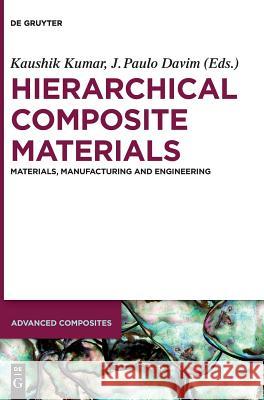Hierarchical Composite Materials: Materials, Manufacturing, Engineering » książka
Hierarchical Composite Materials: Materials, Manufacturing, Engineering
ISBN-13: 9783110544008 / Angielski / Twarda / 2018 / 188 str.
Composite materials are defined as "engineered materials made from two or more constituent materials with significantly different physical or chemical properties which remain separate and distinct on a macroscopic level within the finished structure." Recently, the utilization of composites has increased in various areas of science and engineering due to their special mechanical and physical properties. Therefore, composites have the potential to replace conventional materials in various fields of application such as automotive, biomedical, aeronautical and aerospace as well as in others advanced industries. Recently, advanced composites, for example, nanocomposites and biocomposites had been gaining ground for the development of new products in several industries. The goal of Advanced Composites is the combined presentation of materials, manufacturing technology and engineering aspects of composites. This Series covers the complete range of multi scale composite materials, including nanocomposites, biocomposites, functional and smart composites, structural composites, gradient and layered composites, eco-composites, composites based in natural materials, etc. Current topics of interest include the physical and chemical properties, microstructural characterization of composites, design and manufacture of composites and structures, mechanical behaviour in use environments, testing and characterisation techniques, modelling and optimization methods, fracture, creep, tribology, machinability and performance of composites in service. Advanced Compositesis essential reference for academics, materials, physics, chemical researchers, mechanical and materials, biomedical engineers, professionals in composite-related industries.
Hierarchical Composite Materials provides an in-depth analysis of a class of advanced composites that have properties that are anisotropic due to structural organization at different length scales. Chapters address how ordering occurs from the atomic-scale up to the microstructure and how control of these factors leads to the final materials' properties. Manufacturing procedures, properties, and applications of different functionally graded materials are discussed in detail. This book is ideal for materials scientists, mechanical engineers, chemists and physicists.











